If you are looking wholesale lighting solutions, click here.
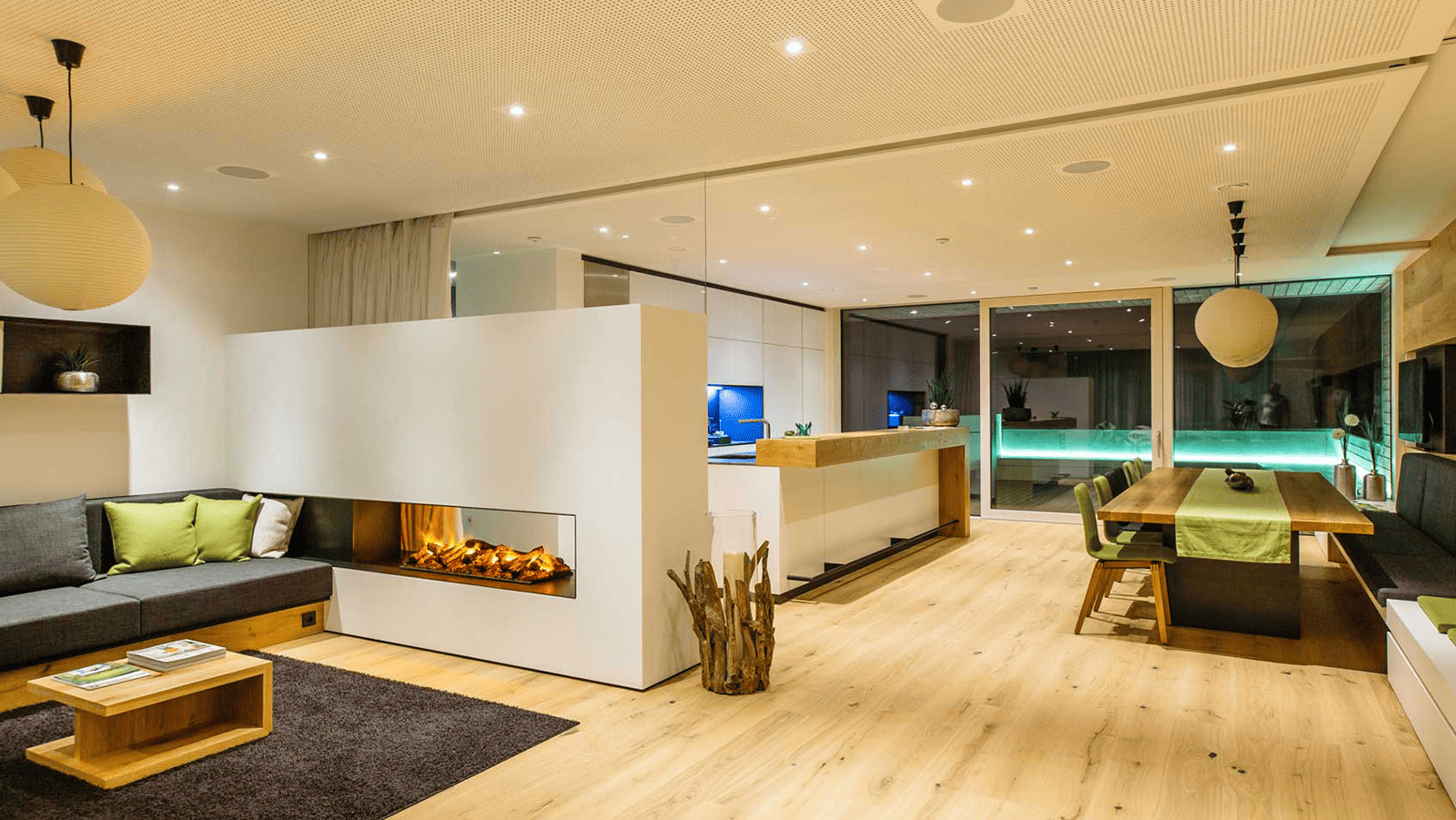
In this in-depth guide, we demystify the complexities of LED dimming, outline its benefits, and simplify the selection criteria.
LED dimming is a specific feature of LED (light emitting diode) light fixtures that enables users to adjust the fixture’s brightness with incredible precision.
While you can also dim traditional incandescent bulbs by restricting the electrical current, LED lights require specialized dimmer switches that manage the dimming operations.
In recent years, we’ve seen an exponential rise in LED dimmers. They are an excellent way of managing your indoor lighting levels and saving on electricity bills. Dimmable LED lamps are a particular favorite among college students for their versatility.
Old-school incandescent and halogen bulbs run on AC (alternating current) and are easier to dim as you only need to adjust the supply voltage. Meanwhile, DC-driven LED light bulbs typically run on fixed voltages and dim only when the current decreases.
The one exception to dimming LED lights is the analog dimming method. It adapts the basic principle of AC dimming to an LED fixture. More on this later.
| Dimming Technology | AC Dimming | DC Dimming |
| Compatible Lighting Technology | Incandescent Halogen CFL Select LED Designs | All LED Light Fixtures |
| Applications | High Voltage Devices | Low Voltage Lights |
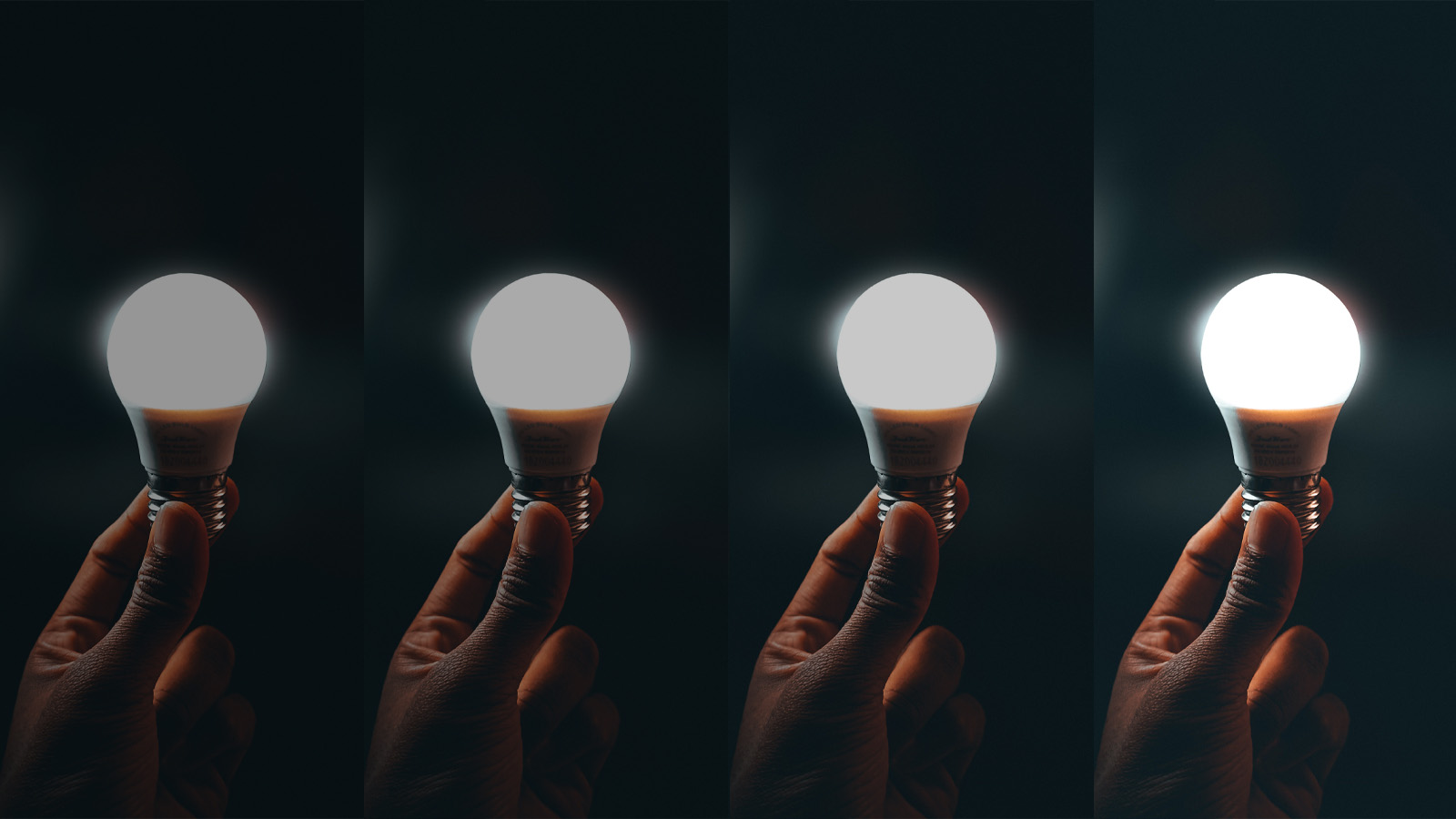
The process of dimming LED lights is dependent on the type of dimming method. We can divide the LED dimming methods into digital and analog categories.
Digital dimming refers to controlling the current supply to an LED driver using digital signals. This method pins the voltage to a fixed value and modulates the current supplied to the LED light bulb through various digital dimmer switches, limiting its total wattage.
A common example of digital dimming is PWM dimming. Pulse Width Modulation (PWM) rapidly turns the voltage on and off every second. It achieves a dimmer LED bulb by flickering it on and off.
Since the flickering rate is over 100 times per second, the end user doesn’t notice the flickering; instead, the light appears dim.
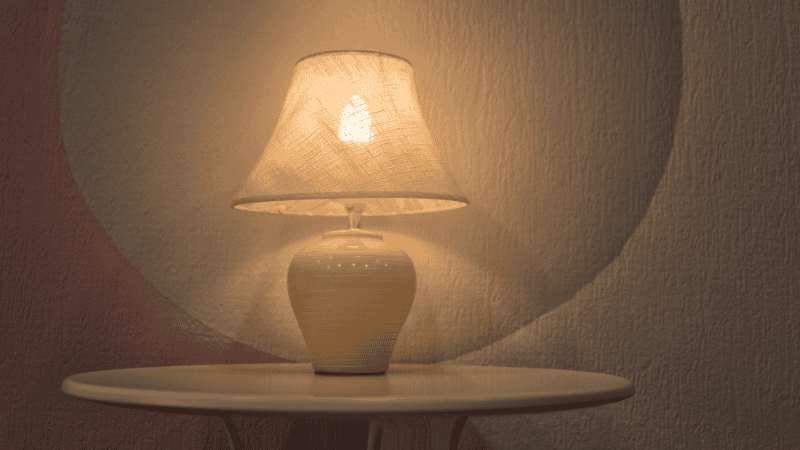
Analog dimming (no computer software is used to control the dimming operations) uses a complex system of potentiometers to reduce the voltage supplied to an LED driver.
LED lights are very sensitive to voltage changes. So, for analog dimming, a sensor first measures the amount of current delivered to an LED driver and then adjusts the voltage, which results in a modulating current, to reduce the total wattage.
For most users, PWM dimming for LED lights is generally the way to go. But for high-wattage industrial LEDs that run at 60v or more, PWM dimming technology shows its limitations.
Modulating voltage from maximum to minimum value hundreds of times a second becomes significantly harder as you reach higher voltages (over 50v).
Thus, analog dimming is a more appropriate solution here, as you don’t need to make such massive changes to the input voltage.
Dimming LEDs provides a level of versatility previously unachievable with incandescent bulbs. Dimmer switches result in improved efficiency, enhanced atmosphere, and reduced electricity bills.
Following are some of the many benefits LED dimmers bring to your home or office space.
Dimmable LED bulbs come with an unexpected perk: a longer lifespan. Using a dimmer switch, such as a PWM hub, you can reduce the total number of “turn-on” hours for your LED lighting.

According to the US Department of Energy, the lifespan of LED bulbs is measured by their L70 rating. L70 refers to the hours an LED bulb stays on before its brightness decreases to 70% of the original output.
A fixture with an L70 rating of 50,000 means that after 50,000 hours of use, the LED bulb will only have 70% of its original luminance. Using PWM dimming to dim the LED bulb to 50% brightness will increase the bulb’s lifespan by approximately 50%, i.e., up to 75,000 hours.
The longer lifespan can be attributed to decreased heat generation due to the lower wattage supplied to the LED bulbs.
Of course, when you use less energy to power your LED bulbs, you will also see lower energy bills. Dimming LED lights is an easy way to ensure optimal performance while consuming the least amount of energy.
Sometimes, switching the lights off at night is not an option. So, it’s recommended that the lights be dimmed to an acceptable level to reduce the associating eye strain while maintaining a decent illumination level.
Dimming LED lights boosts the already exceptional energy efficiency of the technology to an even greater extent.
A dimmable bulb has higher energy efficiency than a non-dimmable light bulb. Additionally, LED bulbs have much higher energy efficiency than incandescent light bulbs. Thus, consumers can gain the best bang for their buck by investing in dimmable LED lights.
| Energy Efficiency | Lighting Technology |
| Highest | Dimmable LEDs |
| High | Non-Dimmable LEDs |
| Medium | Dimmable Incandescents |
| Low | Non-Dimmable LEDs |
LED lighting is all about mixing and matching light fixtures to create the perfect lighting levels throughout your space. Many commercial buildings greatly benefit from the variable lighting approach of dimmable LED lights.
Restaurants set the brightness to low during the daytime when a lot of natural light is pouring in through the windows. Then, when the sun starts to set, the light bulbs get brighter to maintain that perfect illumination level.
Good lighting is synonymous with good ambiance. Dimmable LED lights paired with addressable RGB lights are the perfect combo for any entertainment or recreational space.
Bars, clubs, restaurants, arcades, and similar businesses can elevate their lighting game with the humble dimmer switch.

In our increasingly indoor lifestyles, we are exposed to more artificial lighting than good ‘ol natural sunlight. Lighting engineers foresaw this issue many years ago and have developed lighting designs that improve our health and maintain our well-being.
Dimmable LED lights are an excellent way to reduce eye strain caused by harsh surface reflections and glares. An LED dimmer can help fine-tune your lighting setup to the optimal brightness for indoor use.
We talked about the direct energy savings from dimmable LED lights. Now, let’s talk about the indirect ones. Running LED lights with a low wattage means dimmer lights and less heat generation. Thus reducing the strain on your air conditioning and removing unwanted heat.
Additionally, since dimming LEDs increases lifespan, you spend less on replacement fixtures. In the context of a large warehouse or a mega mall, this means significant savings.

Choosing the right LED dimmer switch is all about information. Knowing the basic types of LED dimmers, their inner workings, and their advantages is essential for your light setup.
PWM is the most commonly available commercial dimmer switch. It rapidly switches the voltage supply on/off to induce flickering in the LED lights. The shift from on to off is so quick that it happens over a hundred times every second.
The high modulation rate makes the LED bulbs appear dimmer rather than flickering. This method is so effective that it’s commonly used in the entertainment industry for consistency and even lighting.
0-10v dimmer switches are analog two-part dimming solutions. Here, the switch sends a signal between 0 and 10v to an LED driver, which adjusts the power supply input to the dimmable LED lights.
If the switch sends a 0V signal, the LED driver sh*ts the power supply to achieve the minimum brightness level.
0-10v refers to the signal quality, not the LED lights’ operating voltage.
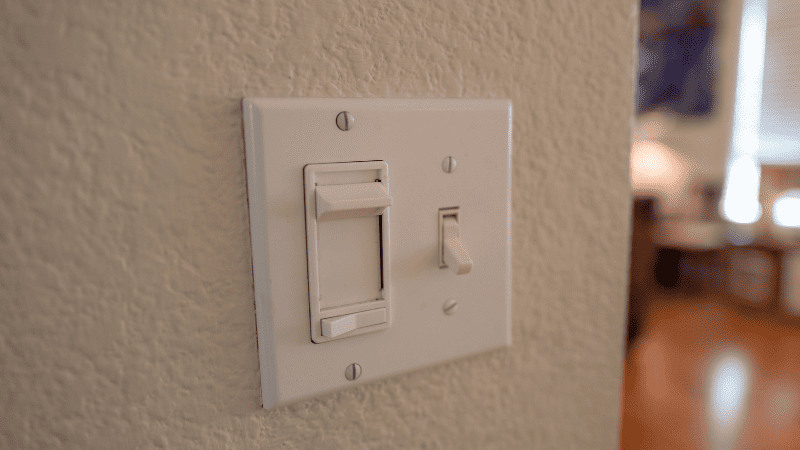
TRIAC (Triode for Alternating Current) dimmer switches are another analog method of cutting off electrical current to LED bulbs. This setup only works with AC power supplies.
It takes the full AC power signal and breaks it into chunks by stopping it at set intervals. TRIAC dimming works with halogens, CFLs, incandescent bulbs, and LED bulbs.
A TRIAC dimmer can be configured in a leading or trailing edge setup.
Leading edge dimmers work by stopping AC flow as the sinusoidal wave reaches zero and resetting once it reaches its peak. Essentially, a leading edge dimmer provides a quick burst of current at the beginning, slowly powers down, then rests and provides another burst of current.
Trailing edge dimmers work in reverse. They stop the flow of electricity as the sinusoidal wave reaches its peak and restart it when it hits zero. This method provides a slowly increasing current to the light bulbs and stops when the current reaches its peak.
This method of dimming LEDs prevents accidental damage by preventing a sudden burst of electric supply to sensitive components.

DAIL (Digital Addressable Lighting Interface) is a two-way communication between lighting fixtures and a control center.
This commercial digital lighting control system does everything from scheduled light off/on timings to dimming select LED bulbs from one convenient location.
Here, a power supply is connected to a series of sensors further connected to drivers controlling the light fixture. The entire process is quite complex, but the result is complete and total control over the light fixtures from any location.
A major benefit of using DALI is that it is compatible with nearly every type of light fixture. Making interoperability simple. DALI control systems were rebranded to DALI-2 as defined by IEC 62386.
DMX (Digital Multiplexing) is a complex digital control system that can control up to 512 electrical devices. Hence, it is commonly referred to as the DMX512 system.
Unlike DALI, DMX setups use a linear daisy chain setup. Here, the DMX control system is connected to one light bulb, which connects to another, and so on.

DMX is a more robust system that can manage dimming operations as well as RGB-LED color control. Like DALI, it is a digital industrial lighting solution best suited to large spaces with many LED lighting fixtures. However, it lacks the same automation capabilities as a DALI setup.
A newcomer to the modern LED lighting game is the smart dimmer linked to your smartphone through an app. These systems use Wi-Fi to connect your dimmable LED lights to your smartphone.
The light fixture generally comes with an embedded PWM controller further connected to a Wi-Fi module. Allowing users to control their indoor lighting over the internet while being miles away from the light bulbs.
| Dimmer Technology | Application | Power Supply |
| PWM | Residential and Small Scale Commercial Lighting | DC |
| 0-10v | AC | |
| TRIAC | AC | |
| DALI | Large Scale Industrial Setups | DC |
| DMX | DC | |
| Smart Apps | Residential Lighting | DC |
LED dimming technology is an incredibly flexible element of lighting design that can be implemented in nearly every industry.
Following are some standout examples of dimmable LEDs in various industries.
In residential settings, LED dimming is pivotal in creating versatile and comfortable environments.
Homeowners deploy dimmable LED fixtures in living rooms, bedrooms, kitchens, and dining areas to adjust lighting levels for different activities and moods.
Whether you’re illuminating your living room for a weekend get-together with friends or going for a softer ambiance for a late-night dinner, LED dimming enhances the overall living experience and contributes to energy savings.
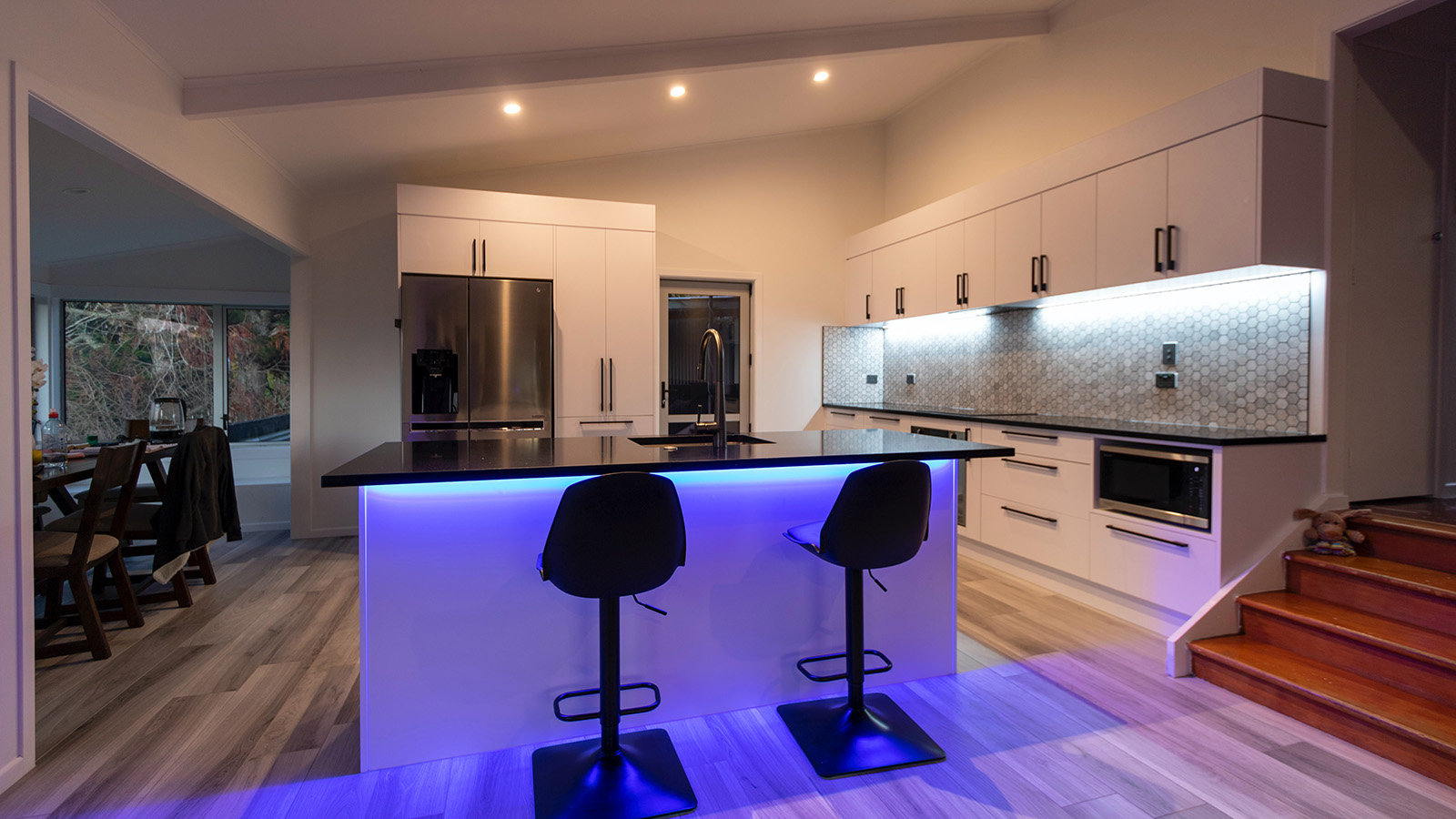
For commercial spaces, the primary goal of LED dimming is optimizing lighting for productivity, comfort, and energy efficiency. Electricity costs can quickly add up in commercial applications, and small energy savings can accumulate significantly over time.
Offices, conference rooms, and retail spaces use dimmable LED systems to provide task lighting that improves productivity and creates dynamic atmospheres that improve employee morale.
Industrial facilities benefit from LED dimming for both energy efficiency and task-specific lighting.
In warehouses, factories, and production areas, LED dimming allows for tailored lighting solutions, ensuring optimal visibility for workers during various tasks.
Entertainment is all about the right lighting and atmosphere. Dimmable lights are a crucial element for creating captivating lighting designs.
LED dimming technology allows lighting designers to craft dynamic and immersive experiences, from theaters and concert halls to film and television productions.

The hospitality industry relies on LED dimming for mood lighting above all else. Creating an inviting and comforting space for guests to relax and enjoy their precious vacation time.
Hotels, restaurants, bars, and event venues use this wonderful lighting design to set the right mood for various occasions. It enhances the dining experience, creates ambiance in hotel rooms, and contributes to the overall aesthetics of hospitality environments.
The trick to choosing the right LED dimming solution is to carefully pre-plan your lighting setup. Here is a quick step-by-step guide to help you choose the optimal lighting design.

Understand the layout and purpose of your space. Indoor lighting is more receptive to dimmable LEDs compared to outdoor ones.
Different areas have different brightness requirements, influencing the choice of dimming technology. Reception, payment counters, and service areas require consistent, high-brightness illumination.
Clarify your lighting design preferences. Determine if you need ambient lighting for maximum visibility, task lighting for those work-oriented areas, or accent lighting for improved aesthetics.
While at it, consider the color temperature and the ability to adjust lighting levels dynamically for different activities or moods.
Lumen is a quantitative measure of the visible light that exits a light source. You can also use foot-candles for a more precise estimate. Foot-candle (FC) is the number of lumens per square foot of area.
Use the following chart to identify your lumen requirements.
| Lighting Space | Lumen Recommendations | Foot-Candle Recommendations |
| Hallway | 5-10 fc | 500-1,000 lm |
| Bedroom | 10-20 fc | 1,000-2,000 lm |
| Living Room | 10-20 fc | 1,000-2,000 lm |
| Restaurant | 50-60 fc | 5,000-6,000 lm |
| Office Cubicle | 50-75 fc | 5,000-7,500 lm |
| Bathroom | 70-80 fc | 7,000-8,000 lm |
| Kitchen Ambient | 30-40 fc | 3,000-4,000 lm |
| Kitchen Stove Area | 70-80 fc | 7,000-8,000 lm |
| Classroom | 40-100 fc | 4,000-10,000 lm |
| Industrial Workspace | 80-100 fc | 8,000-10,000 lm |
Have your lighting design thoroughly review your lighting design and offer some expert recommendations. Like all major projects, it’s always better to measure twice and cut once.
A lighting professional or an electrician can provide insights into the technical aspects of dimming, recommend suitable dimming technologies, and ensure that your chosen solution aligns with both functional and aesthetic requirements.
Remember to do a quick cost analysis of your lighting design. Consider the cost of the light fixtures, dimmer switches, wiring, and, most importantly, labor before finalizing your budget.
LED dimmers are the next big step in residential and commercial lighting spaces. Providing improved efficiency and versatility to your lighting design.
If you’re looking for a fresh illumination setup for your house or to reinvigorate your office space. It’s a good time to invest in some dimmable LED lights.
Risun is the leading lighting solutions provider to a global and diverse clientele. We aim to meet the ever-changing lighting needs of our modern society head-on with top-tier product quality and best-in-class customer service.
Our unparalleled Supply Chain Management Service ensures you get internationally certified products at competitive market prices and through a smooth customer experience. At Risun, we value mutual growth and prosperity above all else.
Get started on your dream lighting setup with Risun. Contact us Now!
Comprehensive Lighting Solutions for MRO Wholesalers and Professionals
send your inquiry
Hi, I'm the author of this post, and I have been in this field for more than 15 years. If you want to wholesale lighting fixtures or lighting related product, feel free to ask me any questions.
Learn More >>Download our catalog to view all of our lighting products.
Ready to get started ?
Send Your InquiryOur team will get back to you promptly

please
download
Get notified about new products
Our team will get back to you promptly!
Add your first comment to this post